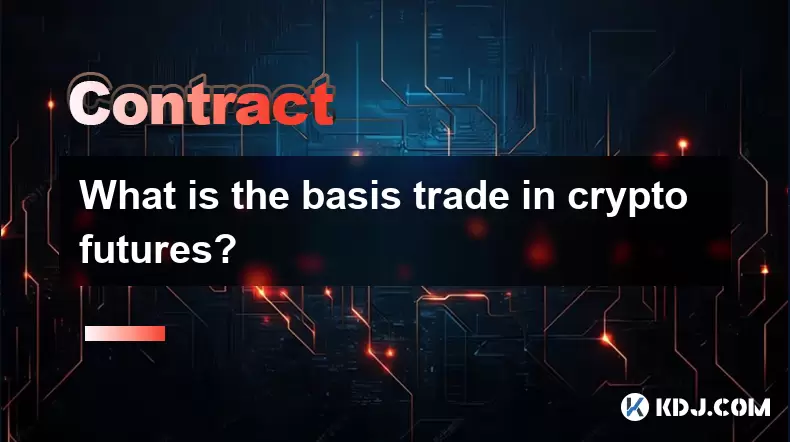-
 Bitcoin
Bitcoin $118300
-1.72% -
 Ethereum
Ethereum $3591
-0.69% -
 XRP
XRP $3.478
-3.53% -
 Tether USDt
Tether USDt $1.001
-0.01% -
 BNB
BNB $737.7
-0.54% -
 Solana
Solana $177.3
-2.40% -
 USDC
USDC $0.9999
-0.01% -
 Dogecoin
Dogecoin $0.2538
7.04% -
 TRON
TRON $0.3256
-0.85% -
 Cardano
Cardano $0.8332
-3.48% -
 Hyperliquid
Hyperliquid $44.80
-3.30% -
 Stellar
Stellar $0.4672
-6.09% -
 Sui
Sui $3.828
-5.98% -
 Chainlink
Chainlink $18.15
-3.41% -
 Hedera
Hedera $0.2655
-7.16% -
 Bitcoin Cash
Bitcoin Cash $517.5
-0.64% -
 Avalanche
Avalanche $23.89
-2.37% -
 Shiba Inu
Shiba Inu $0.00001519
-0.45% -
 UNUS SED LEO
UNUS SED LEO $8.973
0.13% -
 Toncoin
Toncoin $3.211
-2.54% -
 Litecoin
Litecoin $103.5
-3.58% -
 Polkadot
Polkadot $4.313
-3.90% -
 Uniswap
Uniswap $10.31
0.67% -
 Monero
Monero $325.4
-2.88% -
 Bitget Token
Bitget Token $5.049
3.51% -
 Ethena USDe
Ethena USDe $1.002
0.04% -
 Pepe
Pepe $0.00001346
-2.96% -
 Dai
Dai $0.9999
-0.02% -
 Aave
Aave $322.1
-2.93% -
 Bittensor
Bittensor $411.9
-4.70%
What is the basis trade in crypto futures?
Basis trading in crypto futures exploits price differences between spot and futures markets, offering low-risk arbitrage opportunities when executed properly.
Jul 14, 2025 at 03:00 pm

Understanding Basis Trade in Crypto Futures
Basis trade is a strategy commonly used in traditional futures markets and has gained popularity in the cryptocurrency space due to the volatility and price divergence between spot and futures prices. In the context of crypto futures, basis trade involves taking advantage of the price difference between the spot market (where actual assets are bought and sold for immediate delivery) and the futures market (where contracts are traded based on future delivery of an asset). The basis refers to the difference between the futures price and the spot price of a cryptocurrency.
This concept is particularly relevant in the crypto world where exchanges often list multiple futures contracts with varying expiration dates, and where price movements can be highly volatile. Traders who understand how to calculate and monitor this basis can potentially exploit arbitrage opportunities or hedge their positions more effectively.
How Is the Basis Calculated?
The basis is calculated using a simple formula:
Basis = Futures Price – Spot Price
When the futures price is higher than the spot price, the basis is positive, which is known as contango. Conversely, when the futures price is lower than the spot price, the basis is negative, referred to as backwardation. These conditions reflect market expectations about the future value of the asset and can change over time.
For example, if Bitcoin’s spot price is $60,000 and the 3-month futures contract is trading at $61,000, then the basis is +$1,000. If the same futures contract later drops to $59,500 while the spot remains at $60,000, the basis becomes -$500.
Monitoring these fluctuations allows traders to identify mispricings that may offer profitable trading setups without significant directional risk.
Executing a Basis Trade: Step-by-Step
To execute a basis trade, a trader typically takes offsetting positions in both the spot and futures markets. Here's how it works in practice:
- Identify a favorable basis condition: Look for situations where the futures price deviates significantly from the spot price.
- Determine the direction of the trade: If the basis is unusually high (deep contango), consider selling the futures contract and buying the spot. If the basis is deeply negative (backwardation), buy the futures and sell the spot.
- Open positions simultaneously: Execute both trades at the same time to avoid slippage and ensure the hedge is effective.
- Monitor the convergence: As the futures contract approaches expiration, the futures price should converge toward the spot price.
- Close positions near expiration: Exit both legs of the trade once the basis narrows to realize profit.
This approach is generally considered a low-risk arbitrage strategy, although execution speed, fees, and liquidity can impact profitability.
Factors Affecting the Basis in Crypto Futures
Several factors influence the basis in the crypto futures market:
- Interest rates: Higher funding costs increase the cost of holding futures, pushing the basis into contango.
- Market sentiment: Strong bullish or bearish trends can cause temporary deviations between spot and futures prices.
- Dividends or yield: While not applicable to cryptocurrencies directly, staking yields or similar returns can affect the theoretical fair price of futures.
- Liquidity: Illiquid futures contracts may trade at larger premiums or discounts relative to the spot price.
- Time to expiration: Longer-dated futures tend to have wider basis spreads compared to short-dated ones.
Traders must continuously evaluate these variables when assessing potential basis trade opportunities.
Risks Involved in Basis Trading
While basis trading is seen as a relatively conservative strategy, there are risks involved:
- Convergence failure: In some cases, especially during extreme market events, the futures and spot prices may not converge as expected.
- Execution delay: Delays in placing orders can lead to slippage, reducing or eliminating potential profits.
- Exchange-specific issues: Differences in liquidity or pricing across exchanges can create false arbitrage signals.
- Funding rate changes: On perpetual futures contracts, unexpected shifts in funding rates can erode gains.
- Margin requirements: Holding both spot and futures positions may require significant capital and margin buffers.
These risks highlight the importance of having robust trading systems, access to fast execution, and thorough understanding of the instruments being traded.
Frequently Asked Questions
Q: Can I perform basis trading on any cryptocurrency?
A: Yes, basis trading can be applied to any cryptocurrency that has both spot and futures markets available. However, major coins like Bitcoin (BTC) and Ethereum (ETH) tend to offer the most liquid and reliable opportunities due to tighter spreads and deeper order books.
Q: Is basis trading suitable for beginners?
A: While the concept is straightforward, successful execution requires experience with both spot and futures trading, understanding of market mechanics, and discipline in risk management. Beginners should start with small positions and use demo accounts before committing real funds.
Q: How do I track the basis between spot and futures prices?
A: Many trading platforms and analytics tools provide basis charts, showing the difference between spot and futures prices over time. You can also manually calculate it by subtracting the spot price from the futures price for the same asset.
Q: What is the typical duration for holding a basis trade?
A: The holding period depends on the type of futures contract used. For quarterly futures, traders usually hold until close to expiration. For perpetual contracts, the strategy needs to be adjusted more frequently due to recurring funding rate payments.
Disclaimer:info@kdj.com
The information provided is not trading advice. kdj.com does not assume any responsibility for any investments made based on the information provided in this article. Cryptocurrencies are highly volatile and it is highly recommended that you invest with caution after thorough research!
If you believe that the content used on this website infringes your copyright, please contact us immediately (info@kdj.com) and we will delete it promptly.
- XRP Mining for Passive Wealth: Is It the 2025 Crypto Gold Rush?
- 2025-07-19 22:50:12
- India's Wealthy Embrace Crypto: A New Era of Digital Investment
- 2025-07-19 22:30:12
- XRPL's TVL Surge: DeXRP's Ambitious DEX and SUI's Rise
- 2025-07-19 22:50:12
- Donkey Kong Ranked Games: From Arcade King to Switch 2 Bananza!
- 2025-07-19 22:30:12
- Shiba Inu, Ethereum Classic, and Remittix: Which Crypto Will Dominate?
- 2025-07-19 20:48:26
- TOKEN6900 Presale Heats Up: The Meme Coin to Watch in 2025
- 2025-07-19 20:48:27
Related knowledge

What is a maker vs a taker fee?
Jul 19,2025 at 01:14am
Understanding the Basics of Cryptocurrency Exchange FeesIn the world of cryptocurrency trading, maker vs taker fees are a fundamental concept that eve...

How to analyze Bitcoin futures data from CME?
Jul 19,2025 at 05:22pm
Understanding Bitcoin Futures on CMEBitcoin futures on the CME Group (Chicago Mercantile Exchange) represent a regulated financial instrument that all...

How to understand the liquidation price?
Jul 19,2025 at 10:00pm
What Is a Liquidation Price in Cryptocurrency Trading?In the realm of cryptocurrency futures and margin trading, the liquidation price refers to the s...

What is time in force (GTC, IOC, FOK)?
Jul 19,2025 at 08:57am
Understanding Time in Force in Cryptocurrency TradingIn the world of cryptocurrency trading, the Time in Force (TIF) is a crucial parameter that deter...

What is a partial liquidation?
Jul 19,2025 at 01:49am
Understanding the Basics of Partial LiquidationIn the world of cryptocurrency trading, especially within leveraged positions, partial liquidation refe...

How to find good entry and exit points for Bitcoin futures?
Jul 19,2025 at 05:14pm
Understanding Bitcoin Futures and Their Unique CharacteristicsBitcoin futures are derivative contracts that allow traders to speculate on the future p...

What is a maker vs a taker fee?
Jul 19,2025 at 01:14am
Understanding the Basics of Cryptocurrency Exchange FeesIn the world of cryptocurrency trading, maker vs taker fees are a fundamental concept that eve...

How to analyze Bitcoin futures data from CME?
Jul 19,2025 at 05:22pm
Understanding Bitcoin Futures on CMEBitcoin futures on the CME Group (Chicago Mercantile Exchange) represent a regulated financial instrument that all...

How to understand the liquidation price?
Jul 19,2025 at 10:00pm
What Is a Liquidation Price in Cryptocurrency Trading?In the realm of cryptocurrency futures and margin trading, the liquidation price refers to the s...

What is time in force (GTC, IOC, FOK)?
Jul 19,2025 at 08:57am
Understanding Time in Force in Cryptocurrency TradingIn the world of cryptocurrency trading, the Time in Force (TIF) is a crucial parameter that deter...

What is a partial liquidation?
Jul 19,2025 at 01:49am
Understanding the Basics of Partial LiquidationIn the world of cryptocurrency trading, especially within leveraged positions, partial liquidation refe...

How to find good entry and exit points for Bitcoin futures?
Jul 19,2025 at 05:14pm
Understanding Bitcoin Futures and Their Unique CharacteristicsBitcoin futures are derivative contracts that allow traders to speculate on the future p...
See all articles

























































































